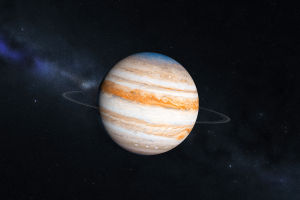Throughout history, tales of celestial connections have captivated imaginations—from myths of shooting suns to modern-day claims of ownership.
In a surprising turn of events, a Spanish woman, Ángeles Durán, made headlines by declaring herself the owner of the Sun. Here’s how she made this audacious claim a reality.
Who Is Ángeles Durán, and How Did She Claim the Sun?
Born in 1961, Ángeles Durán worked as a little-known lawyer before achieving fame in 2010 for her extraordinary claim. Her inspiration stemmed from an analysis of the Outer Space Treaty, which is often referred to as the “constitution of space.” The treaty, intended to regulate international activities in outer space, prohibits nations from claiming sovereignty over celestial bodies.
While reviewing the treaty, Durán identified a loophole: while countries were restricted from asserting ownership, individuals were not explicitly mentioned. Using this technicality, she submitted a request to Spain’s certification office to officially register the Sun as her property.
Initially dismissed as outlandish, her claim gained traction when Durán presented a solid legal argument referencing international and national laws. After a thorough review, officials granted her a notarized document affirming her ownership. The certificate described the Sun with scientific precision, stating its classification as a G2 star, located at the center of the solar system, approximately 149.6 million kilometers from Earth.
Monetizing the Sun: Durán’s Next Move
With legal ownership of the Sun in hand, Durán announced plans to collect a $1 usage fee from every individual benefiting from the Sun’s energy and light. Given the global population of approximately 7.8 billion, this would generate an astronomical $7.8 billion annually.
Durán outlined how the revenue would be allocated:
50% would go to the Spanish government.
20% would fund pensions for the elderly.
10% would support solar research.
Another 10% would aid global hunger relief.
The remaining 10% would serve as her personal income.
Despite the seemingly noble distribution plan, the announcement was met with widespread ridicule. Many dismissed her idea as absurd, and online reactions ranged from humor to criticism. Some questioned the practicality of paying for sunlight, while others jokingly suggested registering other celestial bodies to make a fortune.
Former U.S. Vice President Al Gore even took legal action, holding Durán accountable for global warming caused by the Sun.
Lawsuits and Creative Ventures
Durán’s solar ownership attracted lawsuits from individuals demanding compensation for sunburns, uneven sunlight distribution, and other grievances. She countered by comparing her situation to that of an adopted stray dog’s owner, arguing that new ownership does not imply liability for past actions.
When these legal battles subsided, Durán pivoted to another venture: selling “land” on the Sun. On eBay, she listed parcels of solar territory for €1 per square meter. Surprisingly, she received over 600 orders before eBay suspended her account, citing fraudulent activity.
Undeterred, Durán sued eBay for damages, seeking €10,000 and the restoration of her account. Negotiations for an out-of-court settlement failed when Durán demanded clarity on the compensation amount. The United Nations ultimately intervened, reportedly paying her $500,000 to relinquish her claim. After receiving the settlement, Durán relinquished her ownership of the Sun and gained recognition in legal circles, receiving offers from prestigious law firms.
Precedents in Celestial Ownership Claims
Durán’s audacious move was not without precedent. In 1980, Dennis Hope, a businessman from California, identified the same loophole in the Outer Space Treaty and claimed ownership of the Moon and other celestial bodies in the solar system.
Hope’s claim went unchallenged, and he established the “Lunar Embassy,” selling lunar plots at $24.99 per acre. His clientele included over 2.3 million people, including U.S. Presidents Ronald Reagan and Jimmy Carter, as well as numerous Hollywood celebrities. Buyers could also purchase “Lunar Passports” for an additional $22.99, granting them symbolic citizenship.
In 2005, a Beijing-based company claimed to be Hope’s official representative in China, selling Moon land for 298 yuan per acre. The operation was eventually shut down for speculative profiteering.
The Rise of Space-Related Naming Rights
In recent years, purchasing naming rights for celestial objects has become a trend. Companies offer services allowing individuals to name stars or asteroids as gifts. Though largely symbolic, these transactions have gained popularity among those seeking unique tokens of affection.
For instance, the Chinese drama Nothing But Thirty featured a storyline where a character purchased a star’s naming rights. Similar purchases have become common gestures for loved ones or celebrities, showcasing the profitability of these ventures despite their lack of official recognition.
A Legal and Ethical Dilemma
Durán’s unusual claim to the Sun underscores the ambiguities in space law and highlights how legal loopholes can be exploited. While her actions sparked both amusement and controversy, they also raised important questions about the ownership and commercialization of celestial bodies. As humanity continues to explore the cosmos, clearer regulations will be necessary to address such claims and ensure that space remains a shared resource rather than a tool for personal gain.


